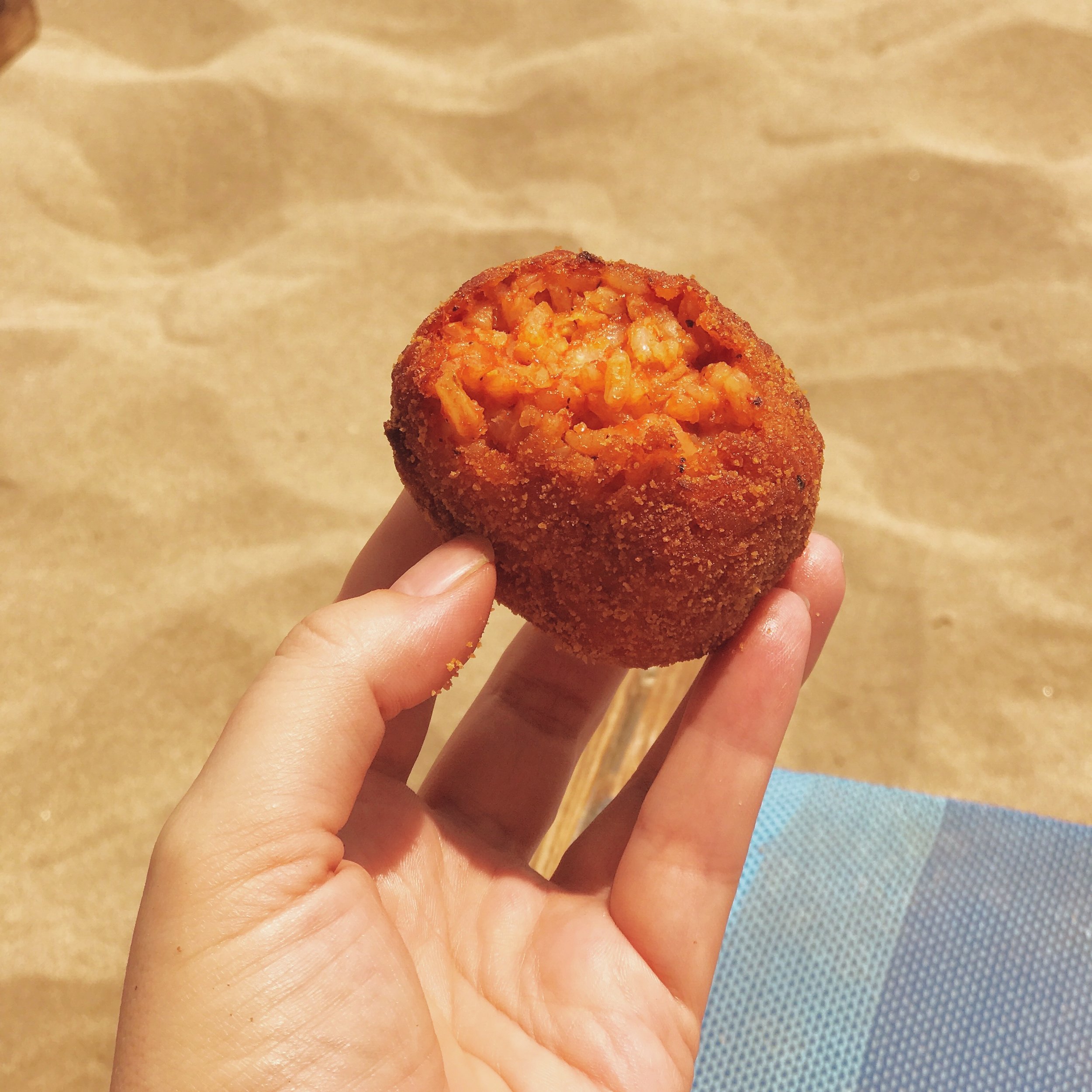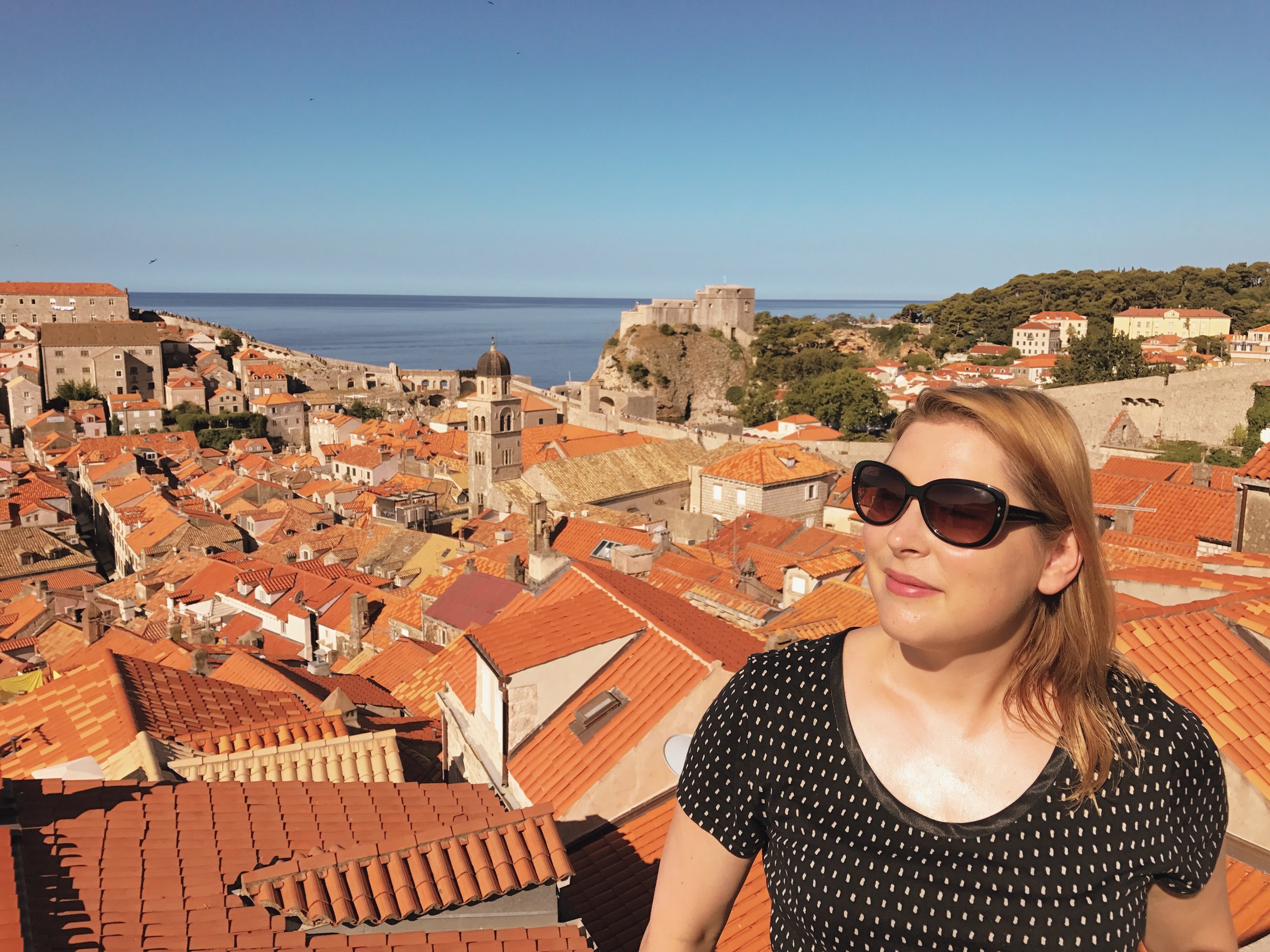What to Eat in Rome: A Fascinating History of Italian Cuisine
In her cookbook, Tasting Rome, food and drink expert Katie Parla shares a fascinating crash course on Roman cuisine. On the Postcard Academy podcast, Katie, a Jersey girl based in Rome, talks us through the Eternal City’s rich culinary history, and clues us in on the Italian foods we need to eat when in Rome. Subscribe to the podcast to hear the whole story. Highlights are captured here. Buon appetito!
Ancient Roman & world food influences
“According to legend, the Romans were founded by shepherds,” Katie says. “Living off of local protein, in the form of lamb, local flavors, like fennel and arugula, and mallow and mint — all the things that you still crush under your feet when you walk through the Forum — that defined some of the indigenous flavors.”
Over the centuries, Rome transformed into a cosmopolitan city, with people coming from all over the world and influencing the food. In the late 19th century, after the unification of Italy, Rome became the capital and saw an influx of ingredients from all over the new country.
“I think that idea that Roman cuisine is this wonderful contamination of influences from all over Italy, and all over the world, sort of clashes with the branding a lot of people have here, like, ‘Roman food is Roman food, and it’s all from Rome!’
"Well, walk through any market, and you’ll see artichokes, which probably didn’t come here until the Renaissance, and eggplants and tomatoes and peppers, which, came in the Middle Ages and Renaissance, respectively. It’s fun to break down the myth with easily observable fact in the food category. That’s always a blast for me, and that’s a lot of what Tasting Rome seeks to do.”
Santa Marinella is an easy train ride from Rome, and they serve supplì on the beach!
Traditions with a twist
The modernization of Italian regional cuisines is happening at different paces depending on where you are in Italy.
“If you’re in Emilia-Romagna at a place like Osteria Francescana, chef Massimo Bottura is really advancing these modern concepts of the local cuisine,” Katie says. “We don’t have that in Rome. There are fine dining restaurants in Rome — they’re almost universally horrendous, and their twists on the local cuisine are generally disappointing and half baked.
“What we do have in Rome, which is way more accessible, and, in my opinion, way more interesting, is a number of younger chefs, bakers, gelato makers, food artisans, who are taking the, sort of, accepted Roman food forms and tweaking them a little bit.”
Food you must try in Rome
Supplì — Small round rice balls. Outside Italy people often call them arancini, but in Italy arancini are the giant round rice balls from the south.
"The Roman supplì, the classico, was made from risotto that’s got a tomato meat sauce, which is cooled and then packed around a piece of mozzarella, then it’s all breaded and deep fried, so the mozzarella melts in the middle.
"For decades, when you got supplì in Rome, it was always that traditional form. And then starting in, like, ’08, ’09, some takeaway joints started to play around with the filling. So, you can find things like radicchio and gorgonzola flavored supplì, or even supplì that’s made with broken pasta, or short pasta, like trofie and pesto. For me, that’s really a modern way to think of street food, or fast food. And it’s effective, because it’s not overwrought, it’s delicious, and it’s affordable.”
Try classic supplì at Supplizio in the city centre.
Trapizzino. Now there are several in Rome, one in Florence, one in the Lower East Side of Manhattan, and several in Japan.
Trapizzino — The pizza cone (which is messy — so don’t eat it on a first date).
“Stefano Callegari, who had a pizza-by-the-slice joint in a neighborhood called Testaccio, was playing around with pizza forms, and made these rectangular sourdough pizzas. Like, squarish pizzas. And would cut them diagonally, and then cut the sliced part open and stuff it with eggplant parmesan, or chicken cacciatore, or tongue with green sauce, or meatballs. That took main courses and put them inside bread, which might not seem like a revolutionary concept in a global setting, but in Rome it’s very novel.
“Pretty soon, the trapizzino, his invention, had taken over his business, and no one wanted his pizza by the slice anymore, so he shuttered that shop and opened a branded Trapizzino stall in that place. If you think about it, it’s that perfect repackaging of Roman food, suitable for this economy.”
Italy suffered during the financial crisis. People wanted to eat their local dishes, but they couldn’t afford to sit down at restaurants, and didn’t have time to go home for lunch to eat them.
“The trapizzino, and then some other innovative pizza concepts, have made those familiar dishes accessible to them. They’re just way cheaper than you would find in a restaurant, way quicker than if you had to prepare them yourselves, and way more affordable.”
Can you think of a better drunk food?
Cacio e pepe — A simple vegetarian pasta that started out as a dish for drunk people.
“In the early 20th century, mid-20th century, it was that food you would eat after you had too much to drink. One of my favorite places in the centre, Armando Al Pantheon, used to not have it on their menu at all. It would be unthinkable to have it on the menu. They would serve it to their drunk guests after dessert if they were still sticking around and pounding wine and needed something to soak up the alcohol.
"It’s a really simple dish; the ingredients are in the name. Cacio is Pecorino Romano, pepe is black pepper, and you use a little pasta water to make a paste. The sauce is this, sort of, very savoury, salty, piquant condiment, which is mixed with pasta, usually tonnarelli, which is a handmade spaghetti. It’s one of those dishes that makes total sense it evolved as a drunk food.”
Pizza al taglio at Pizzarium.
Pizza — OK, you know what this, but do you know the difference between in teglia, al taglio, rosso, and bianco?
“There are a couple of Roman-style pizzas. There’s pizza in teglia, the sheet pan style pizza, which is sold by the slice by weight. Pizza in teglia is part of a larger genre called pizza al taglio. So, sometimes the pizza by the slice, or pizza al taglio, is cooked in a sheet pan, sometimes it’s baked in a, sort of, long, oblong, paddle-shaped form, directly on the bed of an electric deck oven. Both are meant to be Roman fast food. They have simple toppings. Generally, the dough’s barely fermented. It’s supposed to be quick; it’s supposed to be filling; and it’s supposed to be portable.
“My absolute favourite pizza in teglia, and pizza al taglio, is at Pizzarium, which is this, sort of, third-wave pizza by the slice joint. Because the owner, Gabriele Bonci, doesn’t want his pizza to be quick fast food. He wants it to be a delicious gourmet product that champions the farmers that contribute his ingredients. Whether it’s farmers making the grain that goes to the mill, in Piedmont, to stone mill his flour, or the farmer in Northern Lazio that harvests his chicory or potatoes.
“I also really like — and this is what I eat for breakfast every day, and I encourage others to do this, also — pizza bianco, or pizza rosso, which is just baked dough with olive oil and salt, or baked dough with a little bit of tomato brushed on it. I love that at Antico Forno Roscioli or Forno Campo de’ Fiori, two institutions in the centre.”
Katie Parla is an American who’s lived in Rome since 2003. When not writing cookbooks, and articles for The New York Times and other publications, she leads some of the most innovative culinary and archeological tours in the city. Photo by Rick Poon.
Find out more about Katie on katieparla.com, and check out her cookbook, Tasting Rome for more on the fascinating evolution of Roman cuisine.
If you found this article useful, please share it, and subscribe to the Postcard Academy podcast. Each week, expats and adventurers share their insider travel tips on the best food, nightlife, and cultural experiences in the most interesting places around the globe. I’m your host, Sarah Mikutel, an American who's spent the last 7 years living in, and traveling around, Europe.






